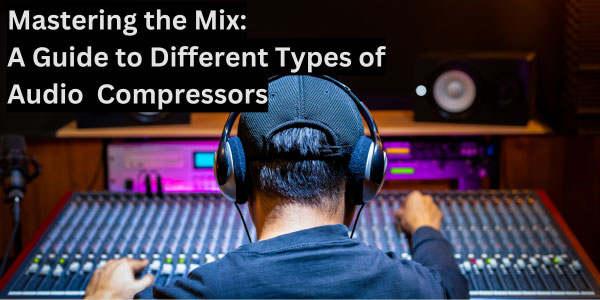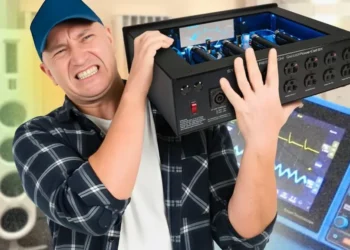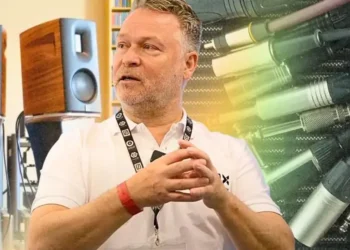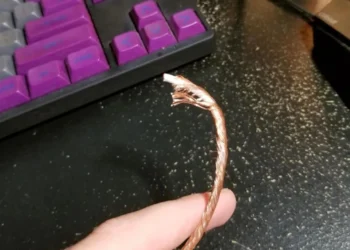Mastering Audio Compression: A Guide to Different Types of Audio Compressors
In audio production, compression is essential for creating balanced, professional-sounding mixes. Compression reduces the dynamic range by making the loudest parts quieter and the quietest parts louder, giving the mix consistency and polish. Different types of compressors each have unique characteristics, so choosing the right one can significantly shape the sound. Here’s an overview of the main types of audio compressors and how they can be used to bring out the best in your audio.
1. VCA (Voltage Controlled Amplifier) Compressors
VCA compressors use voltage to control the amount of gain reduction applied to the audio signal. Known for their precision and speed, VCA compressors are ideal for controlling dynamic sources like drums and vocals. With fast response times and flexible controls, these compressors work well in genres where a tight, polished sound is essential.
- Characteristics: Fast and precise, offering tight, controlled compression.
- Best For: Drums, bass, and vocals.
- Examples: SSL G-Comp, DBX 160
2. FET (Field Effect Transistor) Compressors
FET compressors emulate the characteristics of tube compression using transistor circuits. They offer fast attack times and a distinctive color that adds warmth to any signal, making them popular in rock and pop production.
- Characteristics: Adds warmth and punch, with aggressive, fast compression.
- Best For: Drums, guitars, and vocals where punch and presence are needed.
- Examples: UREI 1176
3. Optical (Opto) Compressors
Opto compressors work by using a light source and optical sensor to control compression. The brightness of the light changes with the signal level, triggering the compressor. This method produces a slower, smoother response, making opto compressors excellent for gentle, musical compression.
- Characteristics: Smooth, natural, and musical compression with slower attack and release.
- Best For: Vocals and bass, providing subtle, musical compression.
- Examples: LA-2A, LA-3A
4. Tube (Variable-Mu) Compressors
Tube or variable-mu compressors use vacuum tubes for gain reduction, providing a natural, warm tone with a smooth compression curve. As the signal level increases, the compression ratio also increases, making this type perfect for gentle leveling rather than aggressive compression.
- Characteristics: Warm, rich sound with natural, musical compression.
- Best For: Mastering and bus processing, adding warmth and “glue” to a mix.
- Examples: Fairchild 670, Manley Variable MU
5. Digital Compressors
Digital compressors offer clean, transparent compression with highly customizable controls. They can replicate the sound of analog compressors or offer unique, transparent compression that’s impossible to achieve with analog devices. Digital compressors are popular for precise control and flexibility.
- Characteristics: Accurate, transparent, and flexible.
- Best For: Versatile use across individual tracks and mastering.
- Examples: FabFilter Pro-C2, Waves C1
6. Multiband Compressors
Multiband compressors divide the audio signal into frequency bands and allow for independent compression of each band. This is especially useful for mastering or complex mixing, where specific frequency areas need to be controlled separately.
- Characteristics: Targeted control over specific frequency ranges, allowing detailed adjustments.
- Best For: Mastering, taming problem frequencies, and controlling mix imbalances.
- Examples: iZotope Ozone, Waves C6
7. Sidechain Compressors
Sidechain compression allows one signal to control the compression applied to another. For example, the kick drum signal can trigger the compressor on the bass track, creating a rhythmic “ducking” effect.
- Characteristics: Essential for creating space for specific sounds in a mix.
- Best For: EDM, pop, and any genre where “ducking” effects are useful.
- Examples: Sidechain available on most digital compressors.
8. Parallel Compressors
Parallel compression, also known as “New York compression,” blends compressed and uncompressed signals. This allows the punch of the compressed signal to be added to the natural dynamics of the dry signal.
- Characteristics: Adds punch and thickness without losing dynamic range.
- Best For: Drums, vocals, and mix buses.
- Examples: Technique rather than specific hardware; most DAWs support parallel compression.
9. Limiter (Brickwall Compressor)
Limiters are a type of compressor with an extremely high ratio, designed to prevent peaks from going above a set threshold. This type of compression is essential in mastering, where the goal is to maximize loudness without distortion.
- Characteristics: Transparent, prevents clipping, essential for peak control.
- Best For: Mastering and peak control to maximize loudness.
- Examples: Waves L2 Limiter, FabFilter Pro-L
Choosing the Right Compressor
Each type of compressor has unique benefits, so understanding what each one offers can help you choose the best tool for the job. A clean and precise VCA compressor may work perfectly on drums, while a warm opto or tube compressor is ideal for adding smoothness and character to vocals. A well-chosen compressor can shape your sound in significant ways, helping your music achieve clarity, impact, and professional polish.
Understanding these compressor types equips you with essential knowledge to craft a powerful and balanced sound. Happy mixing!
/pf/
This article was rewritten by JournosNews.com based on verified reporting from trusted sources. The content has been independently reviewed, fact-checked, and edited for accuracy, neutrality, tone, and global readability in accordance with Google News and AdSense standards.
All opinions, quotes, or statements from contributors, experts, or sourced organizations do not necessarily reflect the views of JournosNews.com. JournosNews.com maintains full editorial independence from any external funders, sponsors, or organizations.
Stay informed with JournosNews.com — your trusted source for verified global reporting and in-depth analysis. Follow us on Google News, BlueSky, and X for real-time updates.













